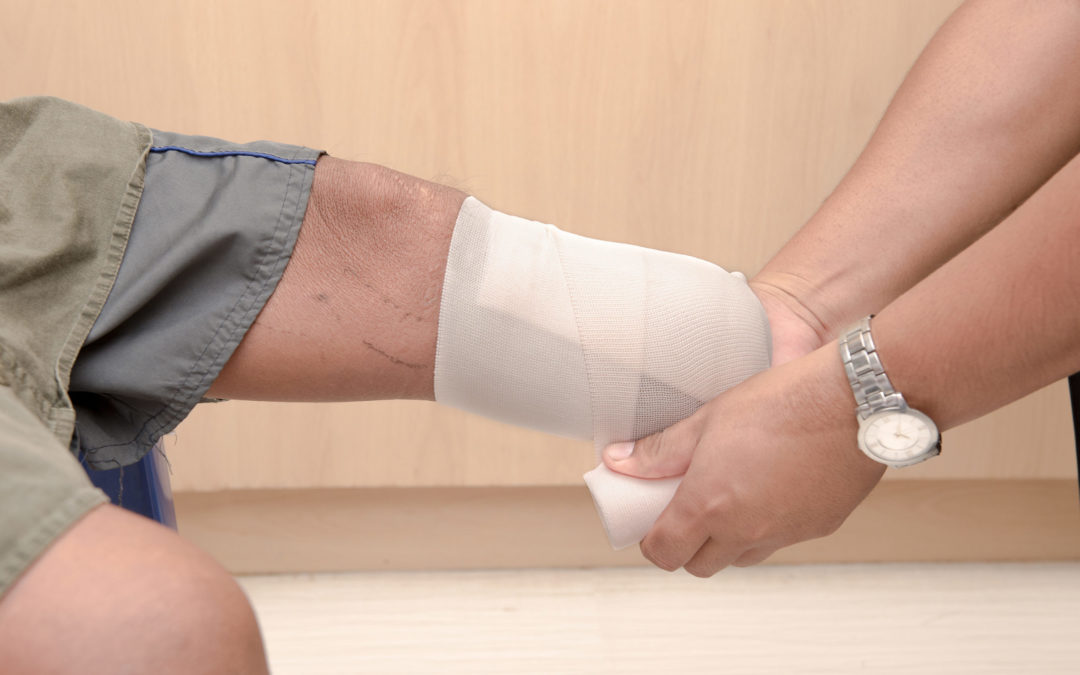Physicians’ failure to identify a ‘compartment syndrome’ issue resulted in a patient having her leg amputated.
One does not anticipate slipping and falling when in the ladieswear section and consequently having to have a limb removed. Sadly, this worst-case scenario actually happened, and the victim then sued her medical providers, who were found liable. The incident occurred in Toronto about ten years ago, demonstrating how slowly justice works.
The patient fell onto the hardwood surface after tripping over a stray clothing hanger on the store’s floor and started to feel what the court described as “excruciating pain.” She was brought to the hospital, where she was diagnosed with a dislocated knee. The blood flow in her leg had been severely hampered by the next morning, so she was transported by helicopter to another hospital for vascular surgery. It was too late to save her leg, which was removed to above her knee.
In this case, the issue was that it took too long for the medical professionals who initially treated her to perform the necessary testing to see whether there was anything more dangerous than a dislocation going on. It was discovered that the patient’s popliteal artery, which runs behind the knee, had been slightly ruptured when she slipped and fell in the store. Thus the agonizing anguish.
The condition also manifested, indicating that excessive pressure had accumulated in the tissue and decreased or stopped blood flow. The Court determined that the doctors should have conducted an examination much earlier than they did. A compartment syndrome evaluation is performed by palpating the leg and passively stretching the muscles by moving the ankle.
Additional, and maybe more importantly, they ought to have compared the damaged leg to the healthy one, checking to see if it was cooler, more numb, had a weaker pulse, etc. This probably would have indicated that there was a significant problem and the leg most likely would have been preserved if additional tests had been done.
The worst-case scenario should always be considered since dislocated knees have the potential to be quite serious—”limb threatening,” according to the court. The popliteal artery is injured in about 20% of knee dislocations, and some studies put that number as high as 45%, according to the court. The risk was particularly clear in this instance since the patient was wailing, rating the agony as “unbearable,” “burning like fire,” and a 10/10 on the pain scale at one point. A bigger dose of morphine than what had been prescribed was given to her.
Although judges make the final decision, expert testimony is usually required in medical malpractice trials because courts need professionals to explain the problem and offer their opinions on it. The defense specialists in this case did not receive high praise.
For instance, a defense witness stated that in 2013, “the boots on the ground healthcare professionals” did not consistently compare the injured leg to the unaffected limb. The court rejected the idea that the standard of care in 2013 did not require a limb comparison, which pointed out that it was nowhere to be found in this expert’s own written report and that the very literature that this expert cited contradicted this claim.
Even though it was obvious from his own evidence that there had been a breach of the standard of care, the court claimed that another defense expert refused to admit there had been one. The court declared that instead, “he resorted to splitting hairs, giving inconsistent answers, raising issues that had no application to this case, and, astonishingly, taking the position that he could not comment on the standard of care regarding a physical examination for compartment syndrome, even though he had been called as a witness for precisely that purpose.” Even worse assessments were given to a different defense expert, who the court referred to as “deplorable.”
In cross-examination, “He gave non-responsive answers to simple questions on multiple occasions, he attempted to resile from statements contained in his report, and he refused to admit obvious statements. In addition, he gave answers that made no sense.” The court claimed that these witnesses fell short of their commitment. They really ended up serving as “advocates” for the defense, nevertheless.
The court determined that the shop was not responsible and emphasized that reasonableness rather than perfection is the legal standard of care for retail outlet safety. This business had a policy of performing five to eight “Safety Sweeps” each day, which involved visually inspecting the space to find, identify, and address any possible dangers. The court ruled that no evidence was presented that supported the conclusion that the store’s Safety Sweep Policy was unreasonable.
MedMalDoctors has a nation network of medical experts that provides lawyers with opinions on Causation and Standard of Care regarding potential medical malpractice.
Our Medical Director, Dr. Roger Hodkinson, has particular interest in Covid related issues and he encourages you to call him for an exploratory conversation.
To learn more about how MedMalDoctors can assist you in your next medical malpractice case, please call us at 1.800.590.9631 or send an email to marketing@medmaldoctors.ca
From The Medical Post

